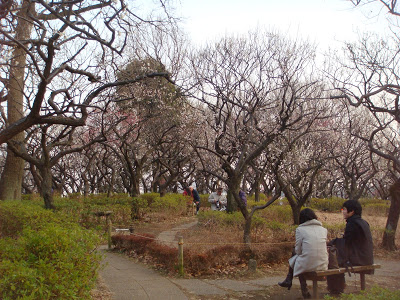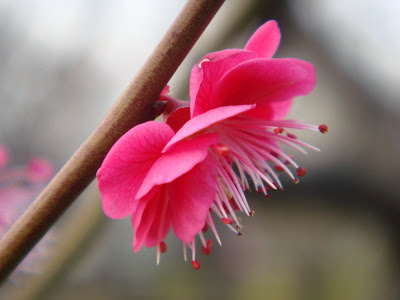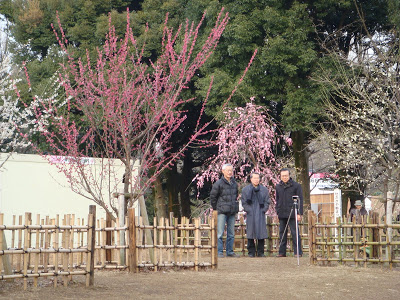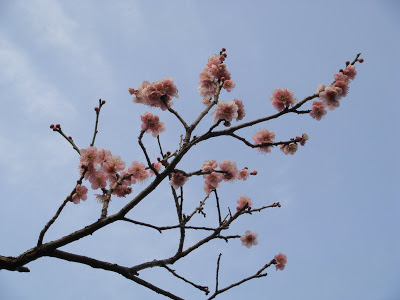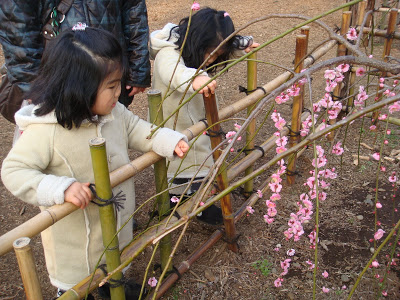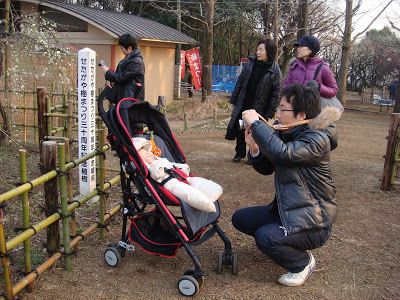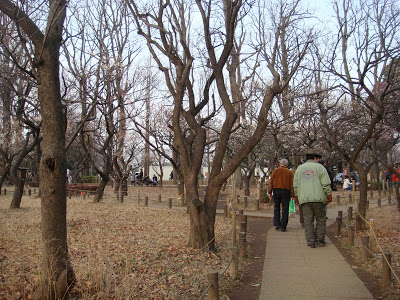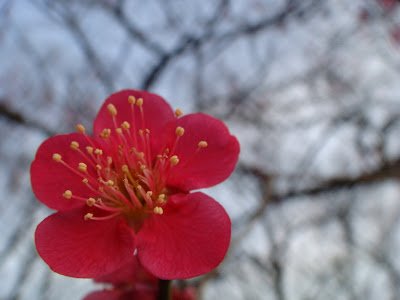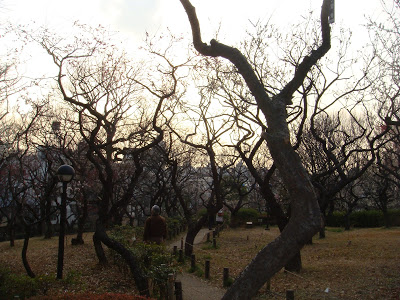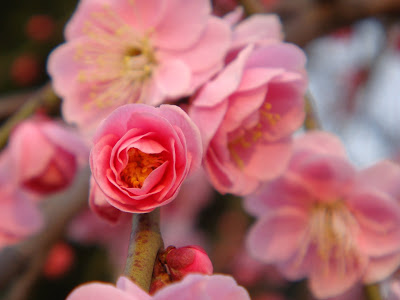 I live near Sakuragaoka Station–that means Hill of Cherry Blossoms. Further along the Odakyu line toward Tokyo is my station’s sister, Umegaoka–Hill of Plum Blossoms. Surprise! Umegaoka is just five minutes from Hanegi Park, one Tokyo’s top parks for viewing plum blossoms.
I live near Sakuragaoka Station–that means Hill of Cherry Blossoms. Further along the Odakyu line toward Tokyo is my station’s sister, Umegaoka–Hill of Plum Blossoms. Surprise! Umegaoka is just five minutes from Hanegi Park, one Tokyo’s top parks for viewing plum blossoms. 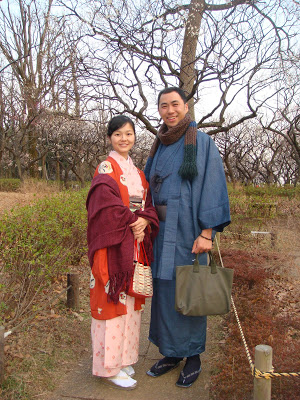 I stalked this beautiful couple like a paparazzo for a few minutes until, while lurking behind a bush further down the trail, I saw them trying to set up a camera to take a picture of themselves. I hopped out of my hiding place, smiled, and offered to take their photo. “Ahh! Arigato gozaimasu!” they smiled and bowed. “Thank you very much!” Then I pulled my own camera out of my pocket and said, “Photo ok?” Smiling and nodding, they said no problem! Aren’t they beautiful?
I stalked this beautiful couple like a paparazzo for a few minutes until, while lurking behind a bush further down the trail, I saw them trying to set up a camera to take a picture of themselves. I hopped out of my hiding place, smiled, and offered to take their photo. “Ahh! Arigato gozaimasu!” they smiled and bowed. “Thank you very much!” Then I pulled my own camera out of my pocket and said, “Photo ok?” Smiling and nodding, they said no problem! Aren’t they beautiful?
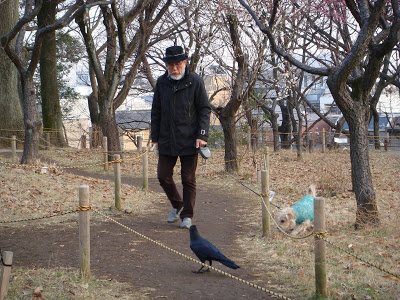
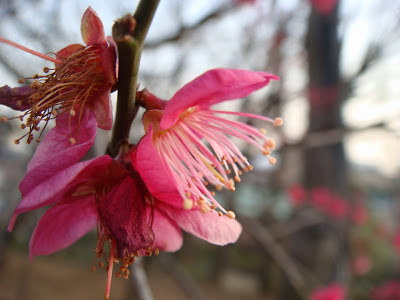 Here’s what I like about plum blossoms: 1. They smell so good! Walking home after dark carrying my organic Italian whole wheat pasta, strawberries and French bread I was almost home when I passed through a bubble of floral perfume. I stopped and looked around for the ume and found them directly overhead!
Here’s what I like about plum blossoms: 1. They smell so good! Walking home after dark carrying my organic Italian whole wheat pasta, strawberries and French bread I was almost home when I passed through a bubble of floral perfume. I stopped and looked around for the ume and found them directly overhead! 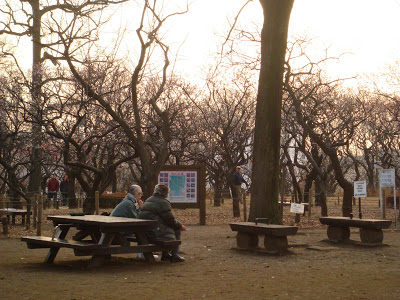
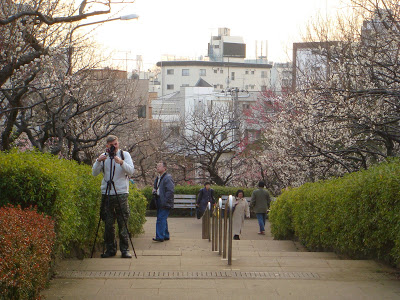 2. I love that they bloom in the dead of winter when it feels like spring will never come. You do not hope in vain! they say.
2. I love that they bloom in the dead of winter when it feels like spring will never come. You do not hope in vain! they say.
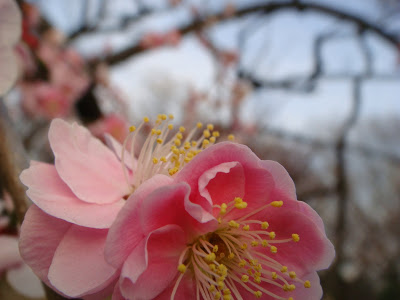
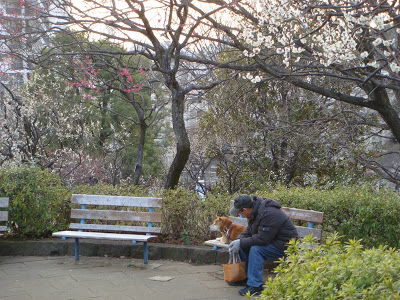
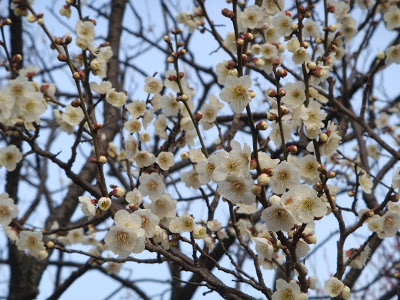
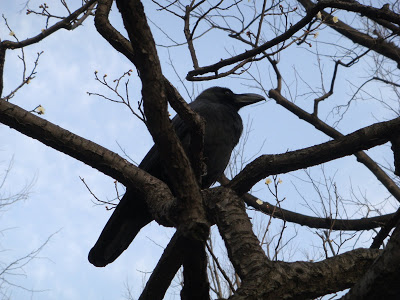 Plum blossoms are also famous for attracting mejiro–brilliantly green Japanese bush warblers. The birds often flit and play in the blossoms. I found a crow.
Plum blossoms are also famous for attracting mejiro–brilliantly green Japanese bush warblers. The birds often flit and play in the blossoms. I found a crow. 